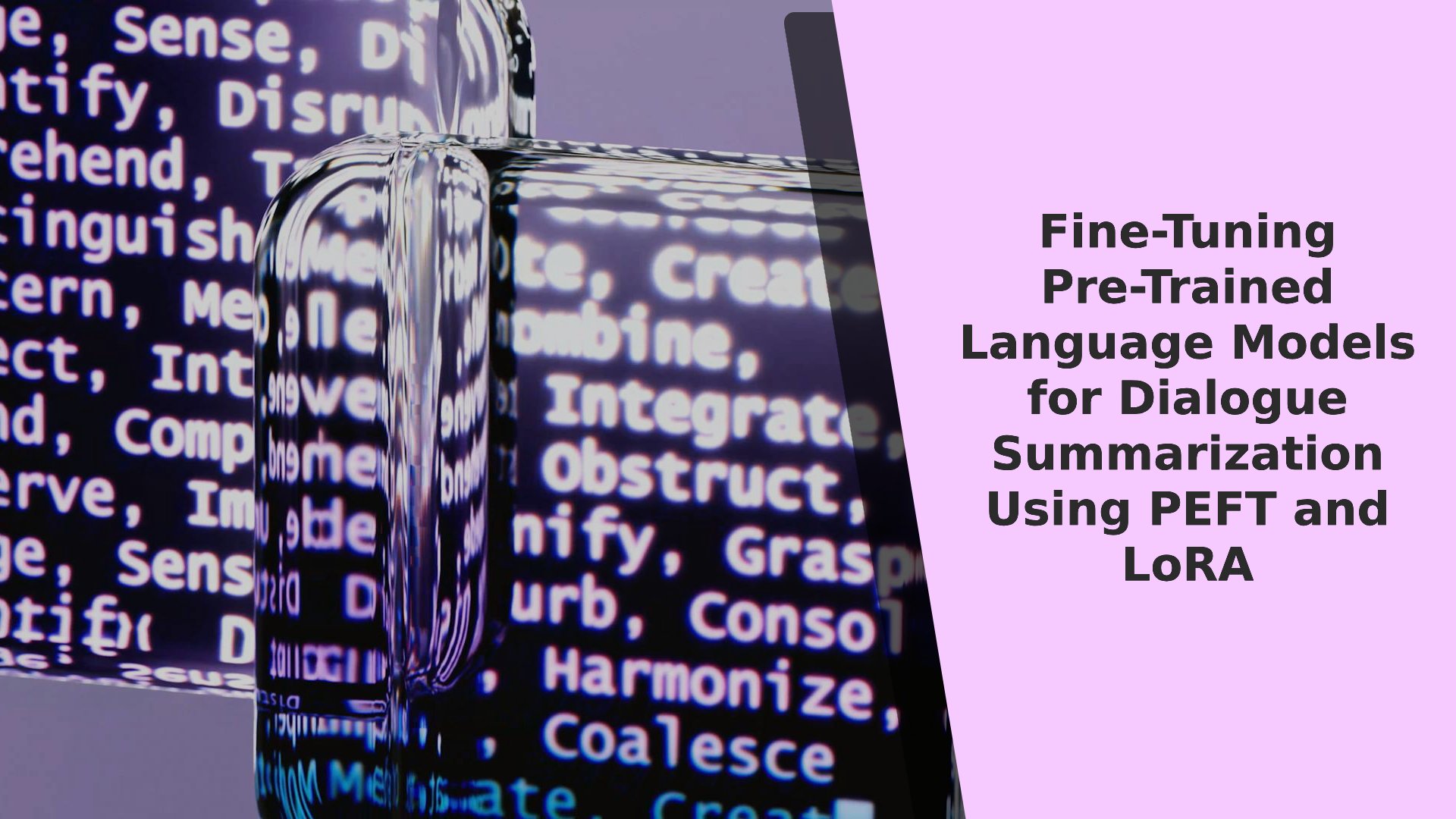Picture Source: Google Deepmind Pexels
In this project, we explore the use of Parameter-Efficient Fine-Tuning (PEFT) and Low-Rank Adaptation (LoRA) to fine-tune large pre-trained language models for the task of dialogue summarization. These techniques allow for efficient adaptation of pre-trained models to new tasks with reduced computational resources, making them accessible and practical for a wider range of applications.
Large pre-trained language models have shown remarkable performance across various natural language processing (NLP) tasks. However, fine-tuning these models for specific tasks can be resource-intensive. Parameter-Efficient Fine-Tuning (PEFT) and Low-Rank Adaptation (LoRA) are techniques that address this challenge by updating only a subset of the model parameters. This project demonstrates the application of PEFT and LoRA to fine-tune a pre-trained language model for dialogue summarization.
The main steps involved in this process are:
-
Defining the Configuration:
- Setting up the
LoraConfigto specify the parameters for low-rank adaptation.
- Setting up the
-
Loading the Model and Tokenizer:
- Using the
AutoModelForSeq2SeqLMandAutoTokenizerfrom the Hugging Face library.
- Using the
-
Applying PEFT to the Model:
- Integrating the PEFT configuration with the pre-trained model.
-
Data Preparation:
- Preparing the dataset for dialogue summarization and defining data collators.
-
Training:
- Fine-tuning the model using the
Seq2SeqTrainerfrom the Hugging Face library.
- Fine-tuning the model using the
-
Evaluation:
- Assessing the performance of the fine-tuned model on a validation set.
Here you can find the IPython Notebook file to do all these step by step.
PEFT is a technique designed to fine-tune pre-trained models on specific tasks using fewer parameters and computational resources. The key idea is to modify only a small subset of the model parameters, keeping the majority of the pre-trained model fixed. This approach reduces memory and computational requirements, making it feasible to adapt large models to new tasks with limited resources.
- Reduced Computational Resources: Fine-tuning only a small portion of the model parameters requires less memory and computational power.
- Faster Training: Updating fewer parameters speeds up the training process.
- Effective for Large Models: Useful for adapting large pre-trained models to new tasks without extensive computational infrastructure.
LoRA introduces a low-rank decomposition to the model parameters being fine-tuned. Instead of updating the full weight matrices, LoRA updates a low-rank approximation, significantly reducing the number of trainable parameters.
- Low-Rank Decomposition: Decomposes weight matrices into two smaller matrices with a lower rank, reducing the number of parameters to be updated.
- Injecting Low-Rank Updates: During training, only the low-rank matrices are updated while the original pre-trained weights remain fixed.
- Efficient Adaptation: Updates only a low-rank approximation, allowing the model to adapt to new tasks efficiently without compromising performance.
- Parameter Efficiency: Significantly reduces the number of trainable parameters.
- Scalability: Can be applied to very large models.
- Maintaining Performance: Despite fewer trainable parameters, maintains competitive performance.
from peft import LoraConfig, TaskType
lora_config = LoraConfig(
r=8, # Rank of the low-rank decomposition. Controls the size of low-rank matrices.
lora_alpha=32, # Scaling factor for the low-rank matrices. Balances the contribution of the low-rank adaptation.
lora_dropout=0.05, # Dropout rate applied to the low-rank adaptation. Prevents overfitting by randomly dropping some adaptations.
bias="none", # Type of bias adjustment. "none" indicates no bias terms are used in the low-rank adaptation.
task_type=TaskType.SEQ_2_SEQ_LM # Task type for the model. Here, it's set for sequence-to-sequence language modeling.
)This project demonstrates the effectiveness of PEFT and LoRA techniques for fine-tuning pre-trained language models on dialogue summarization tasks. By reducing the computational resources required for fine-tuning, these methods make it feasible to adapt large models to new tasks, offering practical solutions for a wider range of applications.
If you have something to say to me please contact me:
- Twitter: Doguilmak
- Mail address: doguilmak@gmail.com
